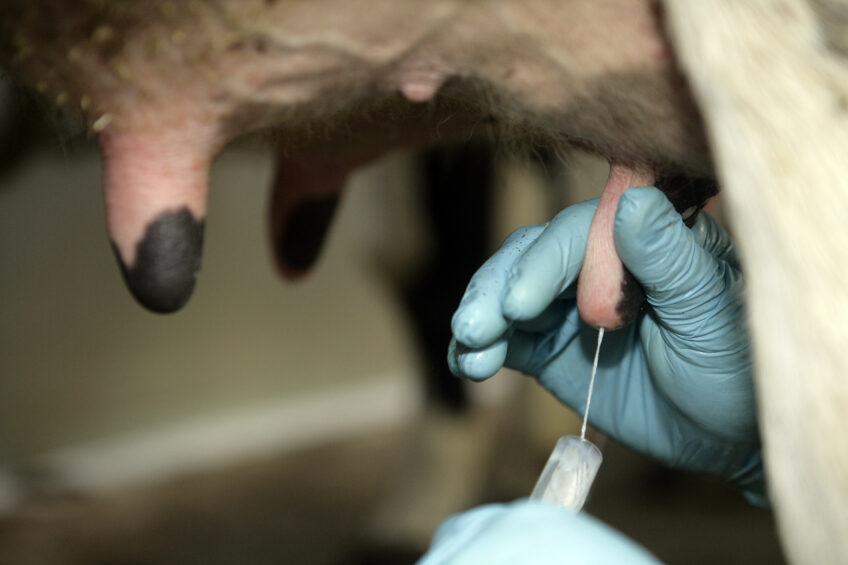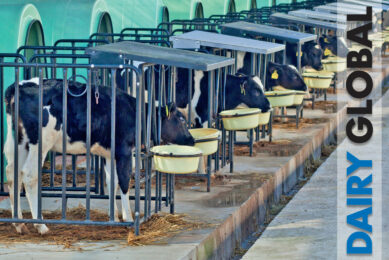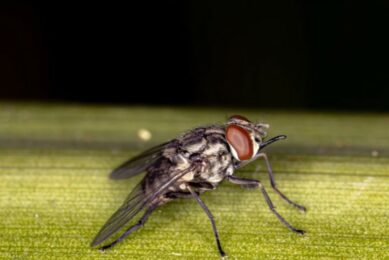New solutions for mastitis control

We still have a lot to learn when it comes to mastitis. Better knowledge on which bacteria are present in the udder, in combination with novel ways how to reach and influence the bacteria population is the key to more effective treatment and lower costs for the farmer.
This was one of the conclusions drawn at a recent seminar for cattle veterinarians in Rome, Italy. Ynte Schukken, director of the Animal Health Service (GD) in the Netherlands, addressed that, although we already know a lot about mastitis, new insights are constantly gained, which in turn help veterinarians and farmers to be more effective to prevent the disease or effectively treat clinical cases.
Know the bad bacteria
Schukken explained that it is all about the balance. “With this I mean that it is important to rediscover a good balance of bacteria that are normally present in the udder (called the microbiome). Udder tissue is in fact a unique little world on its own. Milk samples from cows with a high somatic cell count or clinical mastitis are often sent to the laboratory and cultured on a plate to find out which bacteria we are dealing with. However, in 30% of the cases, nothing grows on the plate and even in 25% of the samples from clinical cases, no bacteria are grown on the petri dish in the lab. “So this can be misleading. When we use other detection techniques (sequencing or screening the DNA of the bacteria), we suddenly see that there can be more than 1,000 different bacteria (good and bad) present in a milk sample. And that number is generally higher in a healthy udder. This provides insight into what we actually mean by a healthy (normal) mix of bacteria and an abnormal mix of bacteria in the udder. If we have more knowledge on how variation in normal bacteria is formed we can use this information to influence these bacteria. This allows us to create better treatment plans and use a certain product in a more specific way,” said Schukken.
Focus on the dry cows
According to Schukken, these bacterial populations are also heavily subject to the phase of the dairy cow. “We often see in dry cows that there are bacteria present that can cause mastitis, but they do not develop the disease. We have discovered that the dry cows have more inflammatory cells (cytokines) in the body. Once these animals have calved, mastitis can suddenly pop up, as a result of major changes in the cow’s immune system after calving. At the end of the dry period, the immune system of the cow is very focused on inhibition of the immune response. This can have diverse effects in the case of an infection in the udder. It therefore seems attractive to stimulate the immune system in the latter part of the pregnancy, so the cow is better equipped to respond to a bacterial infection in the udder. This stimulation can for example be done by giving immune-stimulating cytokines, or by an inframammary vaccination.
Solutions without antibiotics
Richard Olde Riekerink, from Bayer Animal Health, and headquartered in New Zealand, applauds the active search for better and more effective treatment methods for diseases such as mastitis. “In addition to fertility problems, mastitis is one of the major diseases for dairy cows. In the coming year, we therefore want to put more effort in to find new solutions for the growing dairy sector. We put emphasis on working with universities to do so. It is key to prevent cows from developing mastitis, but we also examine savvy, innovative methods to treat subclinical and clinical cases. Sometimes antibiotics are still the most effective way to get the disease quickly under control, but we are also investigating certain non-antibiotic solutions.”
The company is committed to improving mastitis treatment and control by, for example, developing a vaccine against Staphylococcus aureus and to optimise the formulation / dosage of injectors (so that less active substance / antibiotics is needed to get the same result). “It is important that we find solutions to better reach / target the mastitis causing bacteria in the udder. Some bacteria are very smart and hide very well in the udder tissue. After treatment of the udder, it often seems that the problem is solved and the bacteria are gone, but mastitis may then appear once again at a later stage.” Bayer is also investigating (together with a university) the development of injectors based on keratin (the natural protein found in skin and hair for example). “The inside of the teat is not even and we are examining whether keratin can form a better plug in the nipple or stimulate the natural keratin plug compared with the current injectors. This way, the teat canal is better closed off against bacteria.”
Responsible use of antibiotics
According to Schukken from the GD, new insights into bacterial variation in the udder are vital to develop better treatment protocols. He therefore welcomes more research on this topic (done by universities and the industry). “The decision to treat animals with antibiotics for mastitis example, must always be done in a responsible way. Ultimately, we want a reduction in the total antibiotic use worldwide. Insights into bacterial populations of the udder and stimulation of the immune system (mainly in the dry period of cows) are some of the new tools that can help to achieve this goal. One thing is clear; we still have things to learn about mastitis.”
Join 13,000+ subscribers
Subscribe to our newsletter to stay updated about all the need-to-know content in the dairy sector, two times a week.












